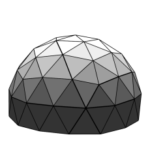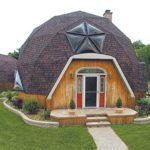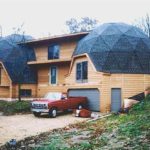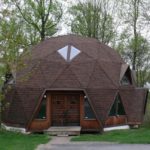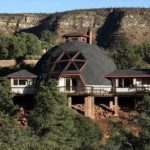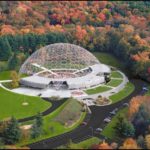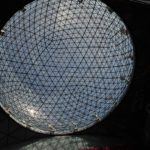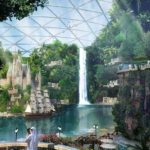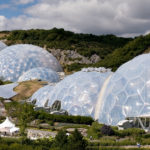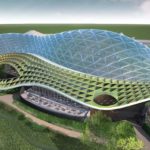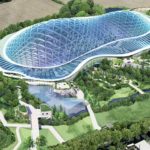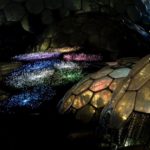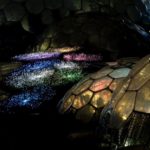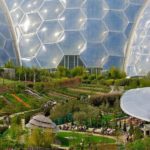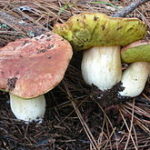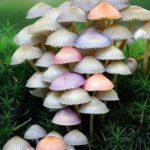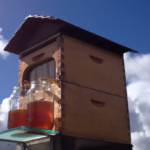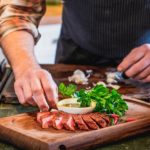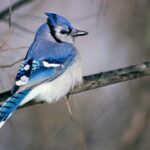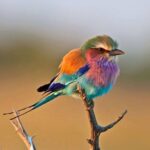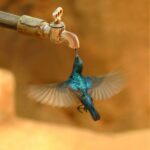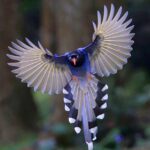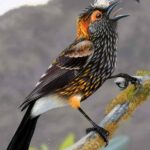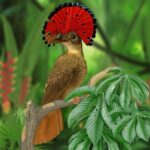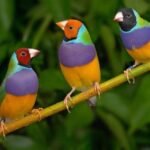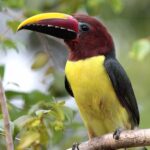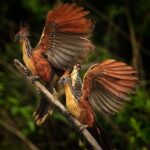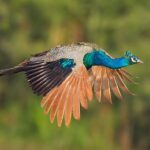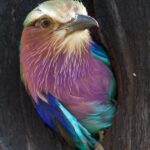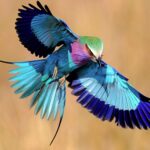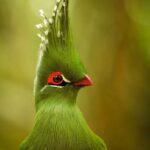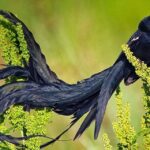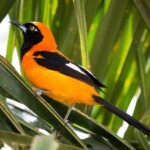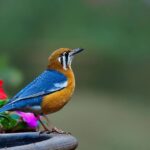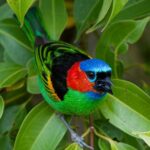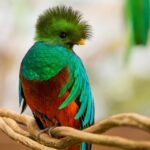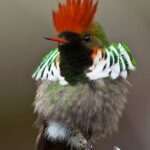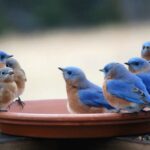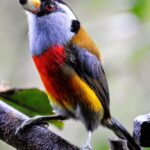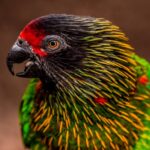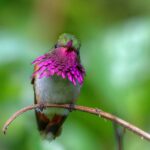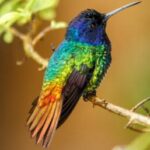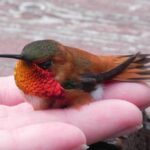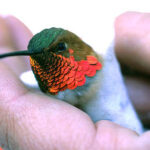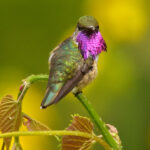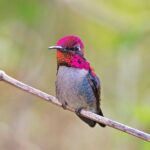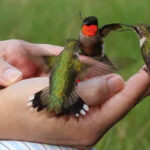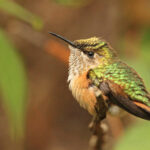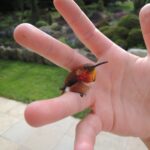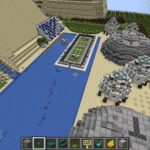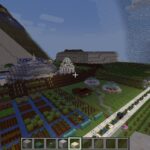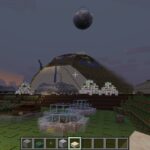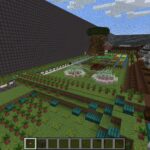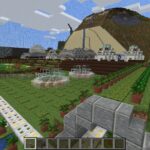Inisfree has more than one large dome enclosing special plants and pollinators.
–
Table of Contents:
- Orientation
- Dimensions & Layout
- Specifics
- Subterranean
- Personnel
- Relevant Holidays
- Novels Excerpt
- Concepts (Images Begin)
- Simple Domes
- Complex Domes
- Products
- 2022 Update: Aviary Considerations
- 2023 Update: 2022 Scale-model in Minecraft
–
Orientation:
Technically, all of Inisfree is one single bio-dome, although it would be more accurate to call it a bio-sphere, as it is contained within a complex sphere of a ‘shell’, rather than just a dome anchored to a foundation built flat atop the ground. This encapsulation affords Inisfree numerous nature preserve advantages, but still warrants additional internal biodomes for further compartmentalization of its flora and fauna. The biodomes this webpage discusses are those of Inisfree’s Cropland; its region devoted to the growing of all types of Inisfreean-diet-approved crops, including hundreds of types of fruit and nut trees, vegetables, herbs, spices, flowers, and more. The biodomes here are grouped together on the side of this Cropland region nearest the GAH section separating the Cropland from woodland surrounding two of its most major distribution facilities.
–
Dimensions & Layout:
The original design of Inisfree called for two large biodomes in this area. Each of them is ~420′ across on the inside, giving them a floorspace slightly larger than Biosphere 2 (the biggest biodome in the Outlands, of the humans on Earth). Our two biodomes are more than a dozen stories tall (~20; ~200′ from floor to the ceiling at the middle of the dome). They are internally divided into concentric rings and pie-shaped sections.
As of the 2020s, many smaller biodomes of different types were added in concentric rings, spaced a few dozen feet apart, outside these two original biodomes. These smaller biodomes range in size from 1 story (10-15′ tall) to a few stories (30-45′ tall). Their purpose is to help further separate/isolate all the different species once grown together inside the larger biodomes, making it that much easier to grow exactly and only what is intended for different projects, such as the making of mushroom-based vegan steak and bacon alternatives.
All our biodomes are on a ~360-acre portion of our Cropland region. With little outside them except for grass on the slightly rolling terrain, they stand out easily on the local horizon, and still have much room to be expanded, if ever we need or want to. Simple asphalt-like roads connect the nearby G.A.H. section to small parking lots outside each of them.
–
Specifics:
This group of biodomes houses several of the aforementioned crop-producing plant types; namely all of the ones which are too likely to cross-breed or otherwise alter one another, as well as some of the other crop-producing plants, if they are left exposed to them. Cross-breeding, such as by cross-pollination, is banned in Inisfree, as the whole city functions as a preserve and, to a degree, a seed bank like that of the Svalbard islands.
Each of these biodomes is hundreds of feet in diameter, and some of them extend down well below ground level. Also, some of these biodomes double in function as greenhouses (though the HAARP facility atop the Snow-dunes disc-plateau ensures inclement weather never befalls this Cropland region of the city).
Mushrooms and helpful bacteria are carefully isolated and applied to roots when it is beneficial to those root systems. This can be done in the form of compost teas, nutrient mists, and other means.
Mushroom species grown in one of these biodomes:
- Bay Bolete
- Black Trumpet
- Button
- Caesar’s
- Cauliflower
- Chanterelle
- Chicken of the Woods
- Crab Brittlegill
- Cremini
- Dryad’s Saddle
- Field
- Giant Puffball
- King Oyster
- Lion’s Mane
- Maitake
- Morel
- Matsutake
- Oyster (Blue, etc.)
- Parasol
- Portobello
- Red-Capped Scaber Stalk
- Reishi
- Shiitake
- Shimeji
- Shrimp Russula
- Slippery Jack
- Termitomyces Titanicus
ICV eyes include a microscopic ability, thus our ICVs use them to auto-check water and compost teas in passing (such as in the hydroponic tubes of our indoor growing areas), after which they apply just the right amount and type of compost tea to each area of plant-types throughout these biodomes and across the rest of our Cropland.
–
Subterranean:
Beneath this region of Inisfree is a continuation of the grid of silo clusters, but the distinguishing feature of all of the skyscraper-tall/deep silos beneath this section of Inisfree is that they are filled with hydroponic and aeroponic back-ups of everything growing on the surface. This results in enough of every type of healthy food (known to planet Earth) to keep all of the 100 million Inisfreean citizens and kajirae perfectly well-fed forever -with (literally) tons of food to spare at all times, in all seasons, and during all outside weather conditions. Each of these silos (of which there are thousands under the Cropland region) are also hermetically sealed, completely self-sustaining environments as well protected as a CDC laboratory. Think of them, again, as a version of the Svalbard seed banks, although these are much more like vaults; far better protected, being deep inside the heavily-guarded and ever-hidden realm of the Inisfreeans.
–
Personnel:
Of the ~2,000,000 girls (ICVs and kajirae) always at work across our whole Cropland, there are always/only a hundred or so in each of our two original/largest biodomes. The smaller biodomes added here in the 2020s have been allotted one ICV-lead team of (~12) kajirae each, and those smaller biodomes are checked once a day or so. This gives the whole area of biodomes a 24-hour presence of these girls on patrol, checking both the structures and what is growing inside them.
–
Relevant Holidays:
- 9 March (12 Mars on our calendar): Butterflies
–
Novels Excerpt:
Behind that luxury barn was a group of geodesic, transparent-topped buildings called biodomes. They were the rounded, more modern-looking versions of greenhouses. Each was big enough to contain fully-grown trees, even those as tall as redwoods and sequoias.
The same atmosphere from the barn and farmland was here around and in the biodomes; Inisfreeans worked as close friends with the Elves, Fairies, and kajirae who wanted to be here. Everyone was getting along. All the plants were well cared for, growing strong. A class about indoor farming was being taught inside, near one of the biggest biodome’s airlock doors.
Below the floor of the biodome they were in… was a radial arrangement of basements and mobile-farm trucks. Inisfreeans were at work down there, too, keeping the whole operation smooth. Every now and then… one of the trucks hidden in that basement would be filled up and sealed, then driven out the hidden garage ramps up to the grassy surface behind the biodomes, along to the highway, and off somewhere else, surely to supply an entire community with the edible ingredients and seedlings of their wildest dreams.
–
Concepts:
–
Simple Domes:
–
Complex Domes:
–
Products:
Great resources/information about mushrooms:
- Paul Stamets; world-renowned mycologist
- Paul Stamets’ fungi website
- Paul Stamets’ Host Defense website
- Paul Stamet’s highly-recommended mushroom-type: pompom blanc
–
2022 Update: Aviary Considerations
Inisfree may be adding an aviary to this part of its realm. These are some of the birds which would be sheltered here if that proposal is accepted.
Different Birds:
Hummingbirds:
The only possible issue so far is that there are no bugs or worms in Inisfree; nothing for non-vegan bird-people to eat (unless they prefer nectar, nuts/seeds, etc.). This is because things in Inisfree are sustained not by cycles or death, but vision, focus, and compatibility. On that note, however, the birds (like everyone else in our realm) may very well find it perfectly easy and effortless to visit (if not also live) here –as they wouldn’t really require much/any food, anyway (at least not while here). And, of course, all vegan (such as seed-eater) birds can effortlessly visit our realm; we always have plenty of their type of food.
…
2024 March: The aviary section of 1 of our biodomes has been approved. Birds intelligent enough to coexist mutually-agreeably with us in our realm are always welcome in that aviary –as their acclimation/starting point. Once we are sure they understand not to casually shit on things while flying overhead, they can start exploring outside this aviary; into the rest of our realm. This bird-sanctuary is also to help them feel safe in such a new place with so many people in bodies bigger than those of most birds.
–
2023 Update: 2022 Scale-model in Minecraft
–
Additionally, see:
- Joe Rogan Experience #1035 – Paul Stamets
- Paul Stamets introduces 2 mushrooms’ known uses
- snap finger, birds land on wrist
–




